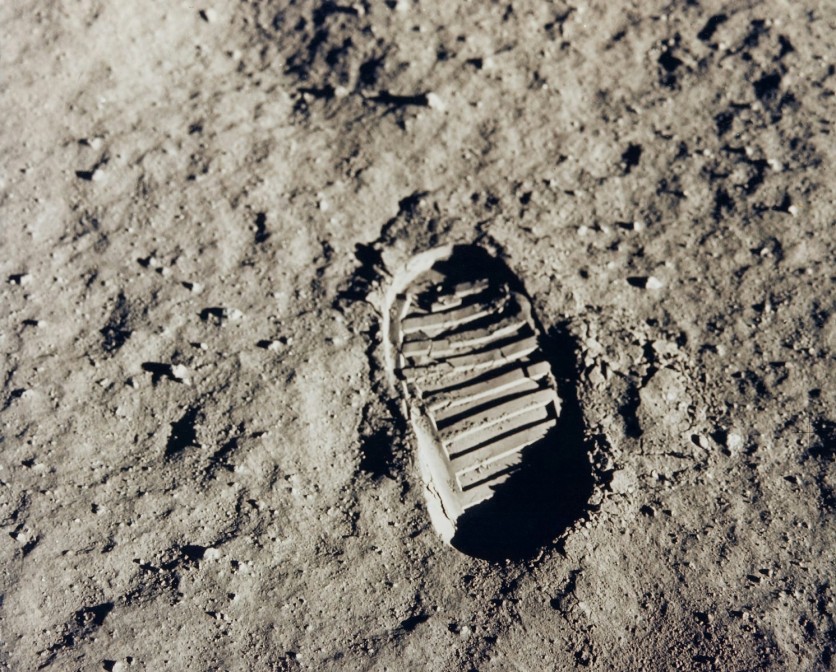For decades, scientists have theorized the existence of lunar caves - underground tunnels formed by ancient volcanic activity and connected to the moon's numerous pits.
Now, a groundbreaking discovery by an international team of researchers has provided the first direct evidence of a cave on the moon, according to WIRED. This cave, located beneath a lunar pit in the Sea of Tranquility, could offer crucial shelter for future astronauts venturing to Earth's closest celestial neighbor.
A Crucial Find for Future Lunar Exploration

Identifying areas on the moon that can shield human and robotic explorers from the harsh lunar environment is paramount for establishing a long-term human presence there. The moon's unforgiving conditions include extreme temperatures and potent radiation, posing significant challenges for lunar exploration.
Countries like the US and China are actively racing to develop sustainable lunar exploration programs, making this discovery particularly timely.
Unearthing the Cave: Radar Data Reveals Hidden Depths
The team utilized archived radar measurements collected by NASA's Lunar Reconnaissance Orbiter (LRO) in 2010.
By analyzing data from a pit within the vast Sea of Tranquility - the famous landing site of Apollo 11 in 1969 - researchers were able to detect empty space at a depth of 130 to 170 meters (426 to 558 feet) below the lunar surface. Their findings were published in the esteemed journal Nature Astronomy on July 17.
A Glimpse into a Lunar Underworld
The newly discovered cave appears to be at least 45 meters (nearly 148 feet) wide and stretches between 30 to 80 meters (98 to 262 feet) in length.
Researchers believe this might just be the initial section of a much larger lava tube complex, hinting at the potential existence of even more extensive caves beneath the moon's surface.
A Sneak Peek in the Moon's Secrets
The study's authors highlight the potential of lunar caves to unlock new insights into the moon's history and volcanic processes. Studying the rocks within these caves could reveal vital information about the moon's geological evolution, including the duration and timeline of lunar volcanic activity and the composition of the lunar mantle.
"These caves offer a unique environment that preserves the moon's history," explains study co-author Lorenzo Bruzzone, a telecommunications professor and director of the Remote Sensing Laboratory at the University of Trento.
Bruzzone adds that the team will analyze the rocks located inside to discover more about the moon's formation. The possible findings could pave the way for the volcanic activity's duration and the mantle's composition.
Lunar Caves as Potential Habitation Sites
The moon's surface experiences drastic temperature fluctuations, with scorching highs of 250 degrees Fahrenheit (121 degrees Celsius) during the lunar day and plummeting lows of minus 208 degrees Fahrenheit (minus 133 degrees Celsius) at night.
Studies have even recorded temperatures dipping as low as minus 410 degrees Fahrenheit (minus 246 degrees Celsius). However, research suggests that lunar caves offer a more stable environment, maintaining a comfortable temperature of around 63 degrees Fahrenheit (17 degrees Celsius).
According to the lead author of the Jul 2022 study on lunar pits, Tyler Horvath, the moon caves could act as protection for astronauts against radiation, extreme temperatures, and micrometeoroids.
A World of Potential, But Challenges Remain
While over 200 pits have been identified on the moon, only a handful are likely connected to cave systems. Additionally, some lava tubes might be inaccessible due to blockages within the passageways. The true nature of the cave's interior remains a mystery, awaiting exploration by rovers or future human missions.
While the cave might resemble a recently formed lava tube on Earth, its size surpasses anything found on our planet. The interior would likely be dark except for sunlight reflecting off the pit floor, with smooth walls potentially punctuated by lava formations known as lavacicles.
The moon's lower gravity allows for the formation of much larger and more stable cave structures compared to those found on Earth. Terrestrial lava tubes typically range from 33 to 98 feet in diameter, while a 2020 study theorized the possibility of lunar lava tubes reaching a staggering 1 kilometer (3280.84 feet) in diameter.
Read Alson: Banana-Based Biomaterial Innovates Lightweight Vehicle Parts, Revolutionizing Automotive and Bicycle Desig

ⓒ 2025 TECHTIMES.com All rights reserved. Do not reproduce without permission.




